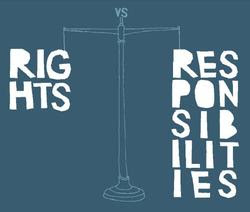Q.2.1 Unemployment between the ages of 15 and 24 has reached a staggering 71 million (ILO, 2016). Solution fluency is a guided problem solving framework that consists of six D’s. Use the solution fluency process to solve unemployment problems in your area. Provide a brief background of your area and how you intend to tackle this problem.
Q.2.1. Solution Fluency:
Information fluency skills are important in order to extract information and to gain knowledge. This is a crucial skill when starting to find solutions to a problem that is presented on a daily basis. Over the last 20 years technology has changed drastically and with these drastic changes new needs have been identified and these needs rand from business to personal and open us up to new opportunities and possibilities. These new opportunities and possibilities have resulted in new job opportunities in fields of business that previously did not exist. Thus helping one prepare for these new changes, helping one learn the skills that will help better and adapt oneself to the opportunities.
The Process:
As a process Solution fluency should become the focal point of learning so that we are intuitively able to adapt to new problems presented to us. Thus requiring the process to be learnt and applied as often as possible until it becomes second nature, becoming an embedded skill. Meaning you have to know the process and apply it as often as needed to problems presented to you These problems could be anything from creating artwork, writing essays to learning a new skill. The solution fluency process or the 6D's:
1. Define:
The hardest part of this process is defining the problem. This process involves identifying the problem and planning where to go with it before you start the research. If you define it incorrectly your answers will be null and void. If you define it too small or too big you might eliminate too much information or have too much extraneous information that clouds the possible results.
2. Discover:
If we have a clear understanding of the problem, we can be in the present, look at the past and then consider how we got to this point. The discovery stage is essentially an exploration stage, looking at the problem from all angles: How did we get here, what was done in the past and could
something have been done differently?
3. Dream:
This is the stage where innovation takes place, where people have ignored the ‘impossible’ and asked with the possible in mind, “Why not?” or “How can it be done?”. It is in this phase that the creativity fluency comes into play. With a clear understanding of where we are and how we got there we are now able to move forward and think of solutions. This process is a whole minded process where we imagine what the solution will be in the future. Essentially it is an envisioning process, where we look at the possible and impossible.
4. Design:
The ‘design’ becomes the planning of how to make the solution a reality. It involves a gap analysis, breaking out all the necessary steps to get there. So the ‘define’ tells us where we are now, while the ‘dream’ helps to guide us on where we want to go.
5. Deliver:
This step puts the ‘design’ or plan into action, making the dream stage a reality. There are two components to this stage; Produce and Publish. The production can be anything, performing a play, completing an experiment, building a sculpture. The second part is the ‘publication’ where the product (play, song, experiment, etc.) is presented.
6. Debrief:
This is the evaluation process of all the steps. Did you define the problem sufficiently, did you get enough information or was it the right information, was the solution a good fit to the problem, the blue-print a realisation of the solution, and the presentation the answer? These are the kind of questions that need to be asked in order to guide future decisions on problem-solving.
The relevance of this fluency should not be underestimated and it is important to note that it is not just a literacy skill but has a far-reaching influence in our lives. In fact, this skill applies to all of the elements of being a digital citizen.
The ‘design’ becomes the planning of how to make the solution a reality. It involves a gap analysis, breaking out all the necessary steps to get there. So the ‘define’ tells us where we are now, while the ‘dream’ helps to guide us on where we want to go.
5. Deliver:
This step puts the ‘design’ or plan into action, making the dream stage a reality. There are two components to this stage; Produce and Publish. The production can be anything, performing a play, completing an experiment, building a sculpture. The second part is the ‘publication’ where the product (play, song, experiment, etc.) is presented.
6. Debrief:
This is the evaluation process of all the steps. Did you define the problem sufficiently, did you get enough information or was it the right information, was the solution a good fit to the problem, the blue-print a realisation of the solution, and the presentation the answer? These are the kind of questions that need to be asked in order to guide future decisions on problem-solving.
The relevance of this fluency should not be underestimated and it is important to note that it is not just a literacy skill but has a far-reaching influence in our lives. In fact, this skill applies to all of the elements of being a digital citizen.




Comments
Post a Comment